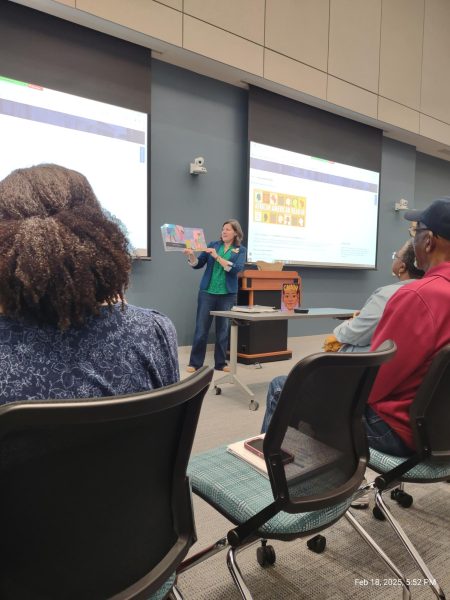Panel discusses technology and identity
When it came to gaming, there was no shortage of questions at the recent synergy panel discussion, as students raised their hands to ask panelists about technology and gaming on Sept. 30 in Lumina Theater. This discussion encouraged conversation about technology and identity in relation to the synergy common reading book “Ready Player One” by Ernest Cline.
Jarret Priner, IT project manager and first-year seminar instructor at UNC Wilmington, led the discussion. He mentioned the “Slender Man” stabbing, a past event that happened in Wisconsin in which two teenage girls wanted to gain the attention of the fictional character Slender Man by luring their friend into the woods to stab her. Slender Man is a recent horror story rendition of a faceless man in a suit and has gained popularity on the internet. The topic was brought up in relation to the discussion themes such as the internet, identity, and community in the modern age.
This sparked more raised hands when the Slender Man game and gaming in general came into question. Not surprising since the book “Ready Player One” takes place in a game where combat is a mechanic.
Bill DiNome, coordinator of student media at UNCW, was one of three panelists who spoke on the subject.
“The pathology is the key. With very young people, I suppose, they may not have the restrain or the judgments or the filters, perhaps,” Dinome said, in reference to the Slender Man mythology, when unstable people make things of otherwise innocent artifacts.
“I think it has a lot to do with the emotional maturity of the person you’re talking about and how they can interpret what it is they are seeing,” DiNome said. “Kids like to emulate and imitate the things they see. If they are imitating something that is potentially dangerous, there is going to possibly be a bad result.”
Rebecca J. Caldwell, director of Crossroads and project director of UNCW’s CARE, talked personally about the subject as a parent with children who could be exposed to these games. Having a three-year-old and a one-year-old, Caldwell talked about how she planned to parent her own children as they grow up in an age influenced by technology and video games.
“My goal would be to help kids be critical consumers of all types of media whether it’s issues of gender, race, or violence,” Caldwell said. “I think it involves conversation and limiting a little bit. I think more importantly because those media images are going to be all around them.”
She related to DiNome, who tried to engage his own son to question the content of games such as “Mortal Kombat”—a game that uses spine-pulling, a move in which a character reaches into a opponents body and pulls out their spine as a finishing move to kill them.
Colleen Reilly was the third panelist of the three present. As an associate professor, she teaches a variety of English classes within the professional writing concentration.
When a student asked why the media blamed problems and violence on games, she responded in defense of the video games.
“Because it’s easy, and they don’t understand it,” she said. “Most people who blame the games have never actually played the games themselves to understand.”
The amount of hands raised represented a lot of students’ concerns about violence and gaming. In the end, the key point was clear: be critical of what you see and hear in all forms.











